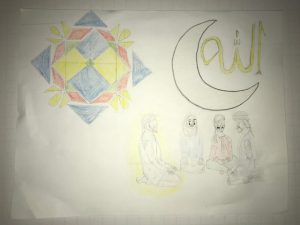The Qur’an as an Experience

Prophet Muhammed, peace be upon him, is believed by Muslims to be the final prophet of God. He often meditated in Mount Hira for contemplation and reflection which is 3 miles north of his birthplace: Mecca. One day as Muhammed was meditating, he was struck by the voice of Angel Gabriel telling him to “read” which he replied, “I am unable to read.” Then suddenly the Angle commanded him to recite the following verses:
“Recite in the name of your Lord who created – Created man from a clinging substance. Recite and your Lord is the most Generous – Who taught by the pen – Taught man that which he knew not.” [Quran, 96: 1-5]
These verses ultimately became the first verses of the Qur’an revealed to Muhammed.
With this otherworldly experience, the prophet felt as if he was being pressed and went home weeping to his wife Khadija. After coming to terms with the significance of the revelation, Muhammad accepted his role as a prophet and eventually would forever change the world.
My drawing is capturing a moment of Prophet Muhammed in a trance like state as his recites Divine revelation to a few of his followers. This experience of him reciting represents the oral traditional of the Qur’an where the aesthetics in words represent its divine origin that cannot be made by man. At the time of pre-Islamic Arabia, poetry was a prodigious part of Arabian culture; thus, Muhammed was often thought to be a poet by those who first encountered them. However, the Divine makes the remark:
“Say: If the whole of mankind and Jinns gather together to make out a book like this Holy Qur’an, they could not do it even if they back up each other with help and support.” (Holy Qur’an, 17:88)
I depicted the followers of the prophet in tears, as the aesthetics and beauty of the verses would stir the hearts. In Popular Expression of Religion, Kristina Nelson mentions:
“For the Qur’an must be heard, not merely read. As the word of God transmitted to the Prophet Muhammad, it is considered to be the actual sound of the Divine, the model of perfect beauty, and a testimony to the miracle sound of human and divine interaction” (257). “Indeed, the approved response to Quranic recitation is weeping; it is a sign that one is profoundly moved by the experience” (260).
The top left corner contains a geometric shape which expresses a physical manifestation of what the Prophet is reciting. The geometric shape and ornament represents the beauty, infiniteness, and esoteric knowledge being shared by the prophet. John Renard in his book Seven Doors describes such Islamic art as alluding to:
“transcendence, infinity, power, and majesty by its use of variations of vegetal and geometric arabesque, an infinitely repeatable pattern” (129)
I view the combination of Prophet Muhammad reciting and experiencing the Qur’an combined with the geometric shape, as a way of representing a physical and spiritual manifestation of what Muhammed is saying. I also include the moon and the name of Allah, as not a political symbol like that of the Ottomans, but as a reference to the moon’s spiritual condition in Islam (Ex: Islamic calendar relying on it) and Allah in Arabic to represent his divine, presence in what Muhammed is sharing with mankind.